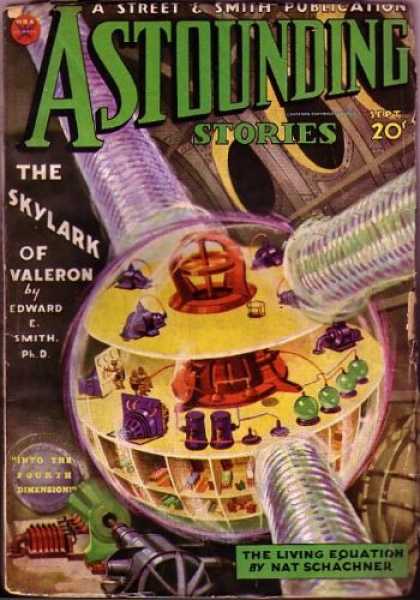|
LITR 4368 Literature of the Future |
Sample answers
for Essay 2:
|
 |
Oz
Martinez.
The Singularity and You
2013’s Anonymous wrote: “Wouldn’t it be great if we didn’t have all this
technology, and we had to get together and discuss what actions we should take
in our future? Can I get off the computer now?”
I don’t think he understands much the way we’re heading. As mentioned in
my classroom presentation, the common futurist perspective is this idea of a
coming technological singularity where machine will outpace human evolution and
reach a point beyond any measure of comprehension. The stark truth, Anonymous,
is that you’ll never get off the computer, and by extension of being a model
assignment, you’ll live in that stasis condition forever.
The
technological singularity is briefly described in “Hinterlands” as the
wormhole/transmitter point for cosmonauts and higher life forms. The term is
described more closely to its physics use of a center point of a blackhole from
which no data can escape, no light and therefore no observation. The singularity
is used here as a stand-in for the concept of limitless potential. Like
“Heliopause” with the omniscient central computer that can read thoughts and
project them, the singularity is colloquially used as a stand-in for the point
where technology begins to breakdown beyond convention. As Arthur C. Clarke put
it, “Any sufficiently advanced technology is indistinguishable from magic.” Thus
the singularity.
From
my understanding the singularity is the point that comes after the melding of
man and machine. Like “Mnemonic’s” assassins and “Chrome’s” cybernetic
protagonist, nature and technology play into each other as a feedback mechanism,
technology advancing the limits of humanity and humanity therefore developing
more advanced forms of technology. “Chrome” uses this technology to practical
ends of physical use, but in the further abstract, technology will eventually
evolve to replace more than physical apparatus but computational, synthesizing
not the gears and motors that can maneuver an arm, but input-free informational
absorption and application. In being made to mimic the unseen pattern
recognition functions of the brain, a computer can learn to associate certain
stimuli to specific reactions. When the character in “Heliopause” queries his
computer for a definition, the argument can be made there is no sentience to the
computer, but a very clever recognition of definition requirement and word
input, and regurgitating the appropriate response.
In
this same way do we as humans first begin to speak, looking at visual stimuli
and associating specific nouns or verbs where appropriate, and only after
sufficient pattern recognition can we begin to think in higher abstract forms of
adjective and adverb. Thus can a
computer similarly learn and evolve. The fun part begins when a computer is not
inhibited by sleep or time or alcohol or loss of neural plasticity through age.
Instead, artificial pattern learning software could continuously learn and form
associations in fractions of the time it would take us to do the same task, and
by extension of learning more, quicker, could reach higher levels of abstraction
similarly higher. This omniscient aid would allow humans to find solutions to
problems quicker, and if we were to enter the realm of photonic and quantum
computers, not only would a machine be capable of learning things quickly, but
it’d be able to simultaneously learn
things very quickly. Like Garden of forking paths where there’s multiple way to
read the story depending on choice, quantum computing allows for
computational forking so data can be
sought for or executed in all
possibilities simultaneously.
This
is all to say that computers can learn
very quickly.
But
this is important because in reality, if we do reach a point of this
singularity, if we do in fact have half-machine men, that would be the race that
makes it into the future. Those pioneers would be the ones capable of living
beyond traditional generations and making intergalactic flights, and similarly,
would have the learning potential to make contact with alien forms and not act
immediately with hostility or suffer a deadblock of confusion.
But I
digress.
The
truth of the singularity is that at some point, synthetic technology will have
the ability to grow exponentially, to cram a civilization’s worth of information
into an hour, and then build another civilization’s worth in the next. It
becomes that things will simply exist, questions will have absolute answers,
with data from trillions of human years’ worth of data compiled and executed to
analyze and respond with. And with one computer built, it will facilitate the
building of a better computer, and then another, and therefore and so on until
we can ask it to analyze the most efficient ways to build a
transgalactic-multiuniversal-hyperdimensional propulsion set.
All
this to some extent. But with the singularity we’d have an unstoppable number
cruncher that can process and render to our hearts content, and with the advent
of 3D 4D printing and
graphene and silicone and all other matters of unbelievably growing technology,
anything begins to seem possible.
“Holo
one, synth one, sim one.” If anything, our future will make this semester’s
reading look quaint.
But
that’s the future I want to write.
